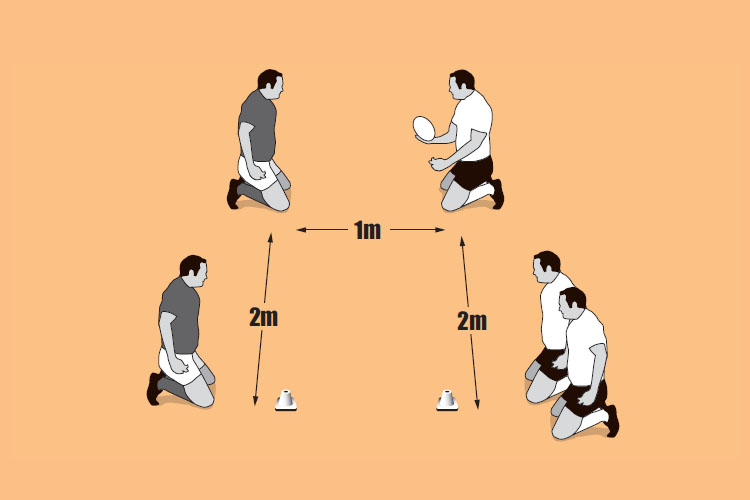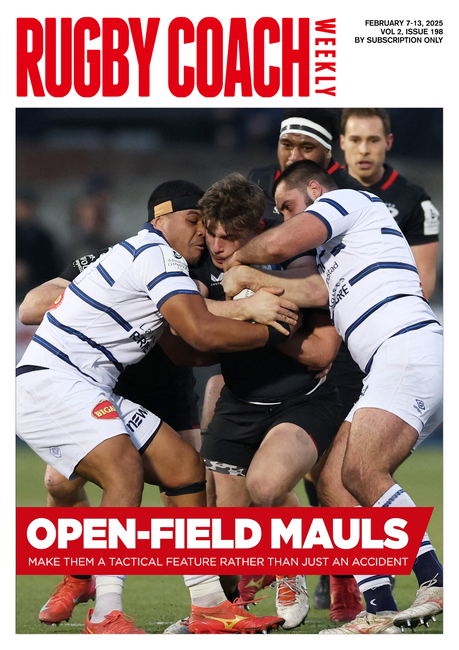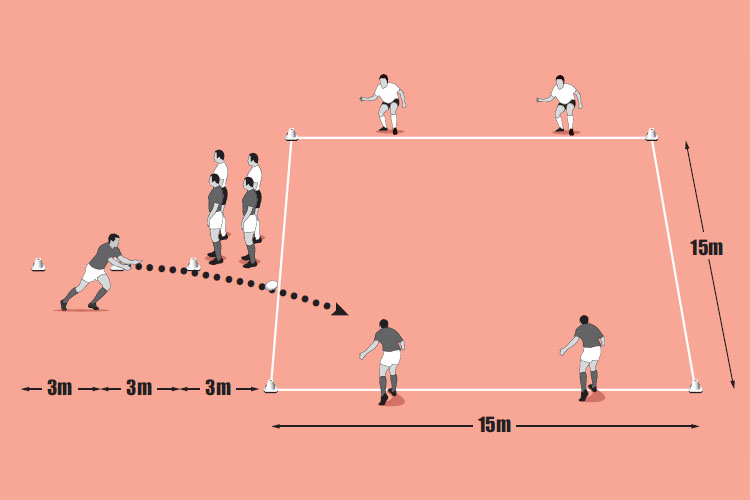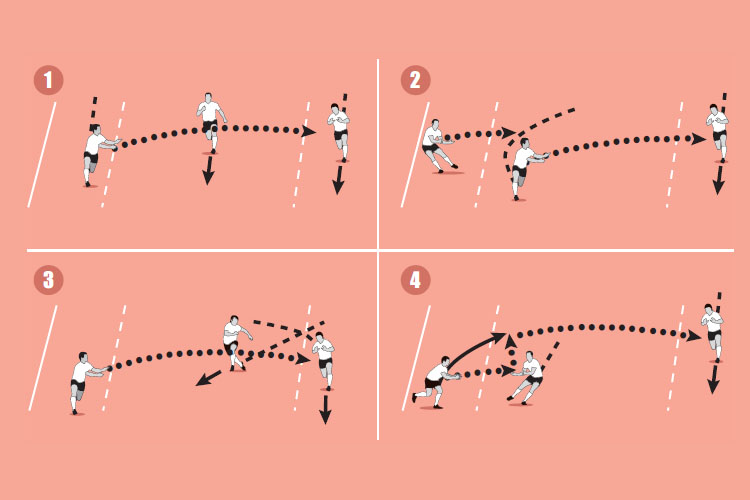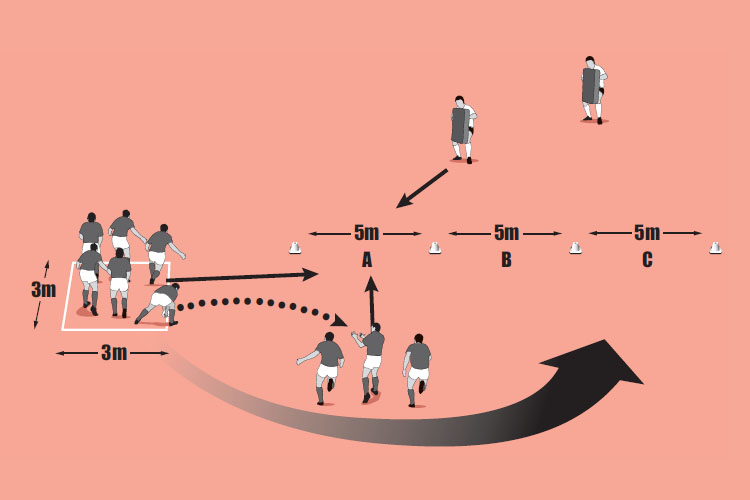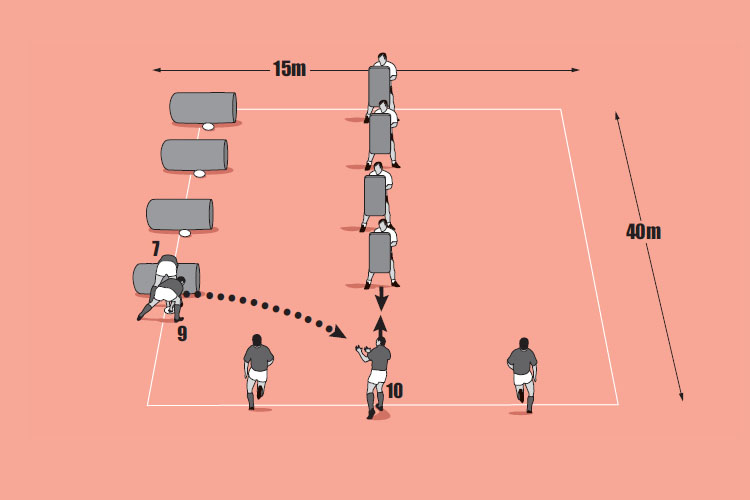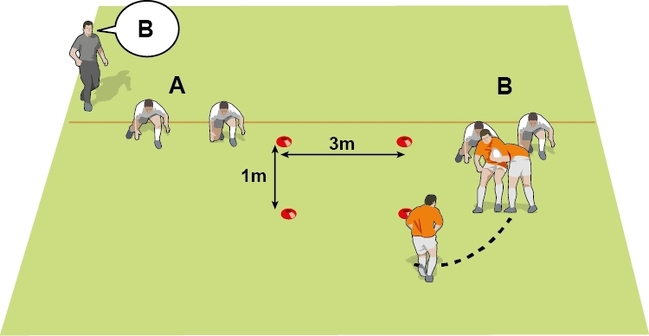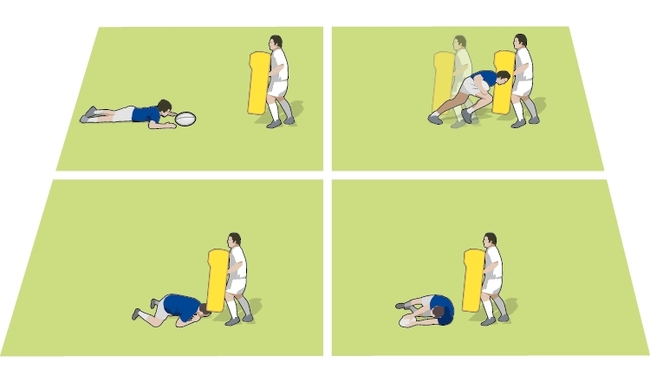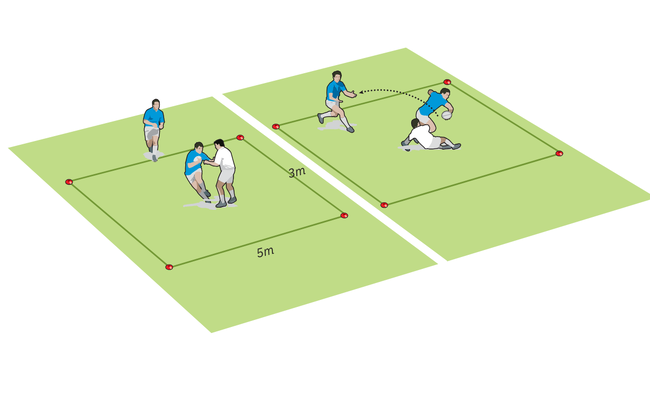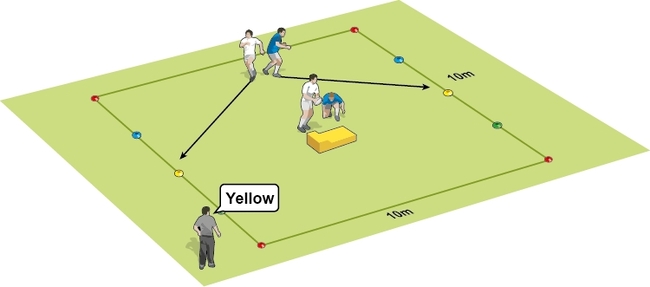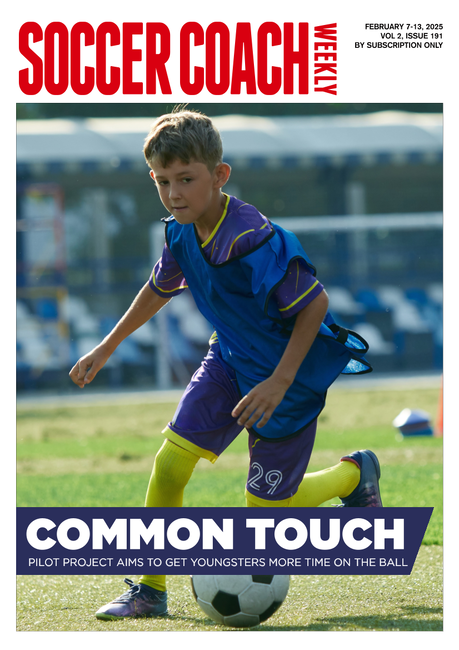Base ruck
Simple to set up, these activities work on improving individual rucking and rucking as a group. There are no bags, just bodies to drive out from the tackle contest. It challenges players to find rucking solution but with a low body position.
Warm up time: 5-7
Session time: 8-10
Development time: 8-10
Game time: 8-12
Warm down time: 5-8
What to think about
Too many ruck drills make players drive back ruck pads. Real rucks are more difficult because there are not easy or soft places to contact with. This session is full of activity, so players will have to find lots of different solutions. You can feed back to players what works. Keep emphasising the key points that a player on his feet is stronger than a player about to go off his feet. After that, the low man tends to win the contest.set-up
- Go low, stay on your feet and drive over the ball.
- Attack underneath the threat or pull the low threat away from the ball.
What you get your players to do
Split into pairs. Put one player with a ball opposite another player 1m away. Their own partners are 2m behind them. All the players are on their knees (see picture 1). When you shout “GO”, the ball carrier is tackled by the player in front of him. The other two players aim to win the battle over the ball on their feet.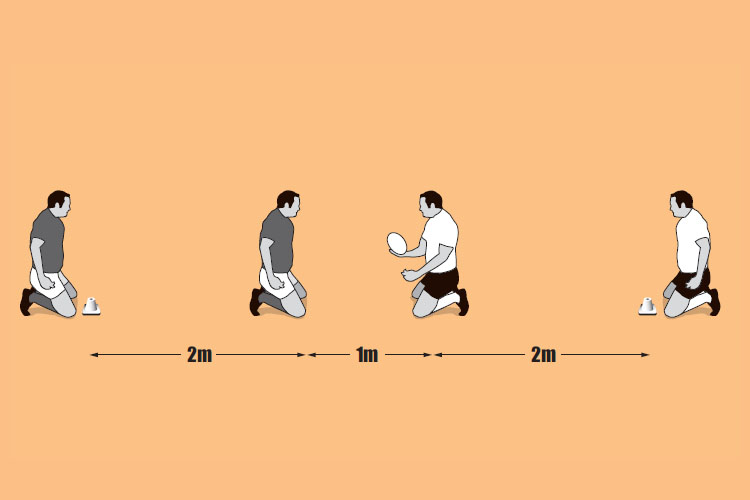
Development
Start the ball carrier and opposite player as before, but this time the ball carrier has two support players 2m away to the side, while the defender has one player 2m away, also to the side (see picture 2). Develop by adding players coming in from different angles. Play until the ball is clearly won or there is an infringement. A spare player can be used to referee the situation (and learn more about what is allowed).Game situation
Put an attacker and defender about 3m away from a 2m box. About 4m to the side of the box put a ruck pad, with three defenders and three attackers on their knees facing each other next to it. Get a feeder to pass the ball to the standing attacker who runs through the box and is tackled by the defender. Call out which attackers and defenders can enter the tackle area. For instance 2 v 1 (A and B v 1) or 1 v 3 (C v 1, 2, and 3).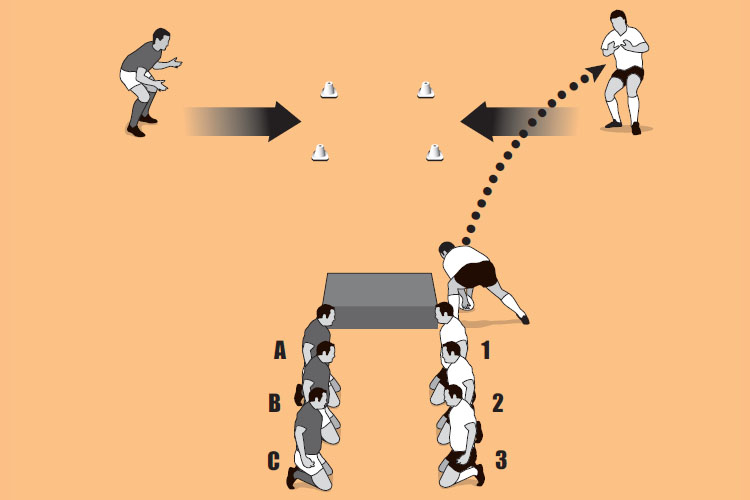
What to call out
- “Drive up from the base of the ruck, not down”
- “Short steps”
- “The arms grab and pull, not push and parry”
Newsletter Sign Up
Coaches Testimonials

Gerald Kearney, Downtown Las Vegas Soccer Club

Paul Butler, Florida, USA

Rick Shields, Springboro, USA

Tony Green, Pierrefonds Titans, Quebec, Canada
Subscribe Today
Be a more effective, more successful rugby coach
In a recent survey 89% of subscribers said Rugby Coach Weekly makes them more confident, 91% said Rugby Coach Weekly makes them a more effective coach and 93% said Rugby Coach Weekly makes them more inspired.
Get Weekly Inspiration
All the latest techniques and approaches
Rugby Coach Weekly offers proven and easy to use rugby drills, coaching sessions, practice plans, small-sided games, warm-ups, training tips and advice.
We've been at the cutting edge of rugby coaching since we launched in 2005, creating resources for the grassroots youth coach, following best practice from around the world and insights from the professional game.
